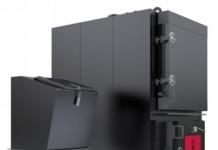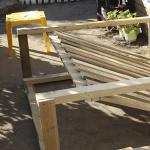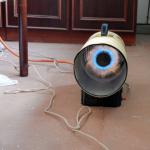The possibility of an emergency caused by flooding of the premises can never be ruled out. The damage from a water leak can be quite significant, especially when the incident occurs in an apartment building. In such cases, the consequences of the flood are often felt by the neighbors below, which only adds to the problems. To avoid such a development of events, it is necessary to install a modern control system that implements reliable protection against water leaks in the apartment.
What can cause leaks?
To prevent a "flood" it is necessary to establish the nature of probable leaks. Consider the three most common causes of leaks:
- The influence of the human factor, for example, the overflow of the bath due to the fact that the landlord forgot to turn off the water supply.
- Depreciation of engineering networks of water supply systems and sanitary equipment. High-rise buildings built in the 70s - 80s of the last century make up the bulk of the housing stock. The pipes installed in the risers of such houses have long exceeded the allowable service life, or are quite close to it. During pre-sale repairs, such nuances are often not paid attention to, replacing only internal communications.
- Insufficient quality of plumbing equipment (pipes, faucet fittings, etc.) or installation work. Savings on repairing an apartment, in particular when installing hot and cold water supply, can later cause an accident, in which neighbors will also be flooded. As a result, you will have to invest again in repairs and purchase new household appliances.
Please note that only the reasons associated with the water supply system are listed above. In addition, sewer leaks are possible due to wear or clogging of pipes, as well as breakdown of plumbing equipment.
The principle of operation of water protection
To clearly explain how the protection works, we will give an example of its typical installation.
Figure 1. Typical installation of the main elements of the leakage protection systemDesignations:
- Controller (the main element of protection against leakage).
- Ball valves equipped with an electric drive (automatically shut off the water when a signal is given or the supply voltage is turned on).
- Wireless .
- Wired sensors.
The system operation algorithm is as follows:
- The controller (a) polls the status of the sensors (c and d) regularly.
- As soon as water enters any of the sensors, its characteristics change. Please note that the detectors that monitor the leakage of water should be located at floor level.
- The controller immediately detects the change in the signal and sends a command to close the ball valves (b).
- Electric actuators actuate the shut-off valve mechanism to shut off the water supply.
As a rule, such protection devices are additionally supplied with autonomous power sources so as not to lose their functions, even if there is no voltage in the household power supply.
Most devices, after one of the sensors has worked, give a sound and light signal, indicating that it is necessary to eliminate the accident.
After eliminating the cause of the accident, the ball valves are transferred to the working position, this is done manually or by giving a signal from the protection controller (depending on the design features of the shutoff valves).
Composition and layout of a typical protection system
As can be seen from the above principle of operation of protection against water leaks, such a protection complex includes the following basic elements:
- The electronic control unit is responsible for the functioning of the complex (and in Fig. 1).
- Sensors that detect leakage and send a signal to the controller (c and d).
- Electric shut-off valve, it shuts off the water supply at the command of the control unit (b).
As an example, let's take a simplified Gidrolock protection electrical circuit.
 Figure 2. Simplified version of a typical scheme of protective systems
Figure 2. Simplified version of a typical scheme of protective systems Designations:
- Connection to .
- Fuse on the power supply of the protection controller.
- The housing of the electronic controller, as a rule, is a sealed structure that does not allow water to enter inside. The material used is plastic or other insulating material.
- Shutoff valve body with electric drive.
- Connecting the drive housing to the ground bus.
- Electric drive windings.
- Residual current device, installed on the power line of the system.
- Transformer providing galvanic isolation for power supply.
- Keys for controlling the electric drive of shut-off valves.
Electrical safety systems
We draw attention to such an important criterion as electrical safety standards, an example of their implementation is shown in a typical electrical circuit shown above in Figure 2. First of all, this is the connection to the protective ground of the main elements of the system, the installation of an RCD on the power line and the provision of galvanic isolation. In cases where the type of power supply is only autonomous, such security measures are not necessary.
As for the valve actuators, they are energized only in the event of an accident, when it is necessary to turn off the taps to turn off the supply of hot and cold water. The rest of the time, the electric drives of the ball valves are de-energized. On sensors (both in wired and wireless versions), the voltage does not add 5 volts, which does not pose a threat at all. Accordingly, even the metal case of the sensor does not need to be grounded.
Overview and comparison of popular flood protection devices
Here is a brief overview of systems that automatically shut off water to prevent leakage. The selection criterion was based on the popularity of devices on the Russian market. To assist with system selection, the specifications of the various models will be reviewed and a comparison table will be provided.
Aquastop
This device is a safety valve that shuts off the water supply in the event of a leak. The principle of operation of this completely mechanical device is based on the comparison of inlet and outlet pressure. A sharp difference between them (a characteristic sign of leakage) leads to the operation of a mechanism that shuts off the water supply through the leakage protection valve.

These devices are designed to be installed on water supply hoses to a mixer, washing machine or boiler. Despite the simplicity of the solution, one cannot fail to recognize the effectiveness and unconditional advantages of a protective valve, which include:
- High response rate when a leak is detected.
- Independence from the power supply.
- Low cost compared to other protection systems.
In fact, Aquastop valves do not belong to the considered controllers, since they provide protection only for a local area and do not have the ability to connect to a common controller, which significantly limits functionality. Nevertheless, such a device is an effective means of flood prevention (by flooding an apartment), which has an affordable cost, which deserves to be mentioned in a general review.
Stop flood "Rainbow"
This leakage protection complex is a completely domestic development, in which the classical scheme of the principle of operation is used. The basic equipment of budget models includes a control unit, two wired sensors, one shut-off valve solenoid valve and installation instructions.

In top models, the system is controlled by an electronic controller capable of processing signals from 15 wireless sensors. Complete shutoff of water at the entrance to the apartment is carried out by ball valves with servo drives. The cost of such models depends on the configuration. Estimated price of a basic leak protection complex (controller, two wireless sensors, two electric taps, a set of batteries) is about $280.
Aquaguard
Protection "Aquastorage" is produced in Russia by the domestic company "Supersystem" under the license of the German developer Germany Engineering. The principle of operation of the controller is built according to the classical scheme. Below is a basic set of protection "Aquastorage Expert" ТН35.

This model comes standard with:
- Control unit with radio controller.
- Three batteries (batteries), 1.5 V each.
- Two wired sensors.
- Two wireless sensors.
- Power supply from a stationary network 220 V.
- Two signal wires 2 m and 4 m long.
- Two cranes of the electric crane ¾.
The cost of protection in the listed configuration is $300-$310.
hydrolock
The protection manufacturer is the domestic company Hydroresurs. The development is based on the classical principle of operation. The main feature of this protection complex is high variability, which allows you to choose the optimal configuration for a house or apartment. In particular, the basic set APARTMENT 1 ULTIMATE BUGATTI, which includes: a controller, three wired sensors, two electric shut-off valves and a battery. If necessary, Gidrolock are equipped with additional blocks that expand the functionality, for example, sending SMS messages in case of an accident.

The cost of the basic set, given as an example, is about $ 260, with the addition of options, the price can increase significantly.
Neptune
At the end of the review, let's look at another Russian development of leakage protection - Neptun (Neptun), created jointly with the Italian company Bugatti. The figure below shows the basic configuration of the Neptun Bugatti Base kit (controller, 2 SHEP and 3-wire detectors).

Leak protection Neptune even in the basic version has a wide potential for expansion by increasing the number of sensors and electric cranes (up to 20 and 6 pieces, respectively). Despite the fact that this brand has the longest response time (up to 20 seconds) among the systems under consideration, its popularity does not suffer from this due to its relatively low cost ($240 for the given kit) and a long warranty (the manufacturer gives 6 years).
Final comparison table
In conclusion, we present to your attention a comparative table compiled according to the characteristics of popular models of various brands.
Table number 1. Comparison of popular models.
| Equipment characteristics |
Name of protection and specific model | |||
| Aquaguard TN35 | Stop flood "Rainbow" Basic set |
hydrolock APARTMENT 1 ULTIMATE BUGATTI |
Neptune Neptun Bugatti Base |
|
| Controller | + | + | + | + |
| Wire sensors (pcs) | 2 | — | 3 | 3 |
| Wireless sensors (pcs) | 2 | 2 | — | — |
| SHEP | 2 | 2 | 2 | 2 |
| Autonomous power supply | ||||
A leak is not only an unpleasant phenomenon, but also dangerous, capable of causing harm to health and property, leading to conflicts and litigation with flood-affected neighbors and always associated with a considerable loss of nerves and finances. And all that is worth putting is protection against leaks!
Leaks are dangerous in any home, but only a smart home can "take care" of safety and stop the leak at the very beginning, blocking the flow of water. Of course, this will not save you from a wet floor, but the amount of damage will be minimal. To do this, in a smart home, leakage protection systems are designed, produced by various manufacturers, but working on the same principle.
The principle of operation of the leakage protection system

The design of most leak protection systems on the market today consists of four main elements:
- sensors that signal the appearance of water
- servo-driven taps that shut off the water supply
- signaling device that notifies of the appearance of leaks
- controller that processes the information received from the sensors and activates the system

The system can be supplemented with a GSM module that transmits a distress signal to a mobile device.
In order for the protection system to work, the sensor must become wet. A few drops of water or contact with a damp mop is not enough. Water should moisten the surface of the sensor, thus closing its contacts and creating conditions for transmitting a radio signal to the controller.
The controller, upon receiving a radio signal from the sensor, activates a servo that closes the taps and turns on a leak notification.
Place of installation of leakage sensors

Install sensors in places where leaks are most likely to occur: under the washing machine, on the floor behind the toilet, bathroom water and sink. Connection of sensors to the control unit can be wired and wireless. Wireless is more convenient, but their performance cannot be controlled. Wired sensors are connected to the wire management unit, which can be somewhat inconvenient, but the controller "sees" the sensors and will send a warning signal if they are lost.
The control unit is placed on the wall in any convenient place, trying to reduce the length of the wires used during installation.
Shut-off valves are installed at the water inlet to the apartment immediately after the meters. The system can be operated from a conventional 220V power supply (considered unsafe) or (preferably) from a 12V power source.
Which protection system to choose?
Leak protection systems are produced by many companies, but in our country the most widely used are Aquaguard, Aquastop, Neptun and Gidrolock.
Aquaguard
 Aquaguard is an innovative water leakage protection system
Aquaguard is an innovative water leakage protection system The scope of delivery of the Aquaguard anti-leak system includes
- Main control box
- Gulf sensors
- Two taps with actuators for cold and hot water
- External power supply
A distinctive feature of the controller is the possibility of its expansion. In this case, the device is assembled like a designer. So, for example, by adding a panel of sensors, you can increase their number to the desired number, by purchasing a radio unit, make a wireless system from a wired system, and by adding a GSM module, receive leak messages on your mobile phone. However, you can be content with the basic version and what is included in the package.
The device is equipped with an uninterruptible power supply on ultra drives, thanks to which you can be sure that in the event of a leak, the taps will be closed even on discharged batteries. Moreover, to resume the water supply, you do not need to urgently change the power source, just press the start button on the controller, and then calmly go for new batteries.
Connection of wired sensors parallel to each other. The number of them can be any. A pleasant moment is a lifetime warranty for sensors from the manufacturer and the possibility of free replacement of three sensors that are out of order.

The Aquastorage system uses ball valves with low friction, which require little force to close. The faucet is closed by a metal gear (in earlier models, the gears were made of plastic) driven by an electric motor mounted on the faucet body and connected to the controller.
To bring the engines into operation and close the taps, a radio signal from the control unit is required, which is sent by the leakage protection system when a corresponding signal is received from the water sensors.

The device of the sensor is quite simple and reliable: the body and the plate with contacts are made of fiberglass, the contacts are coated with immersion gold to protect against corrosion. To increase the reliability of the system, you can use a sensor with wire break protection, which allows the controller to more accurately determine the status of the sensors and inform about problems in the system in a timely manner.

The sensor is only triggered if the water level is above 1 mm. Protection against erroneous operation is a gap of 1 mm between the lower part of the sensor housing and the floor surface.
The radio sensor can be installed in two types: a simple one, which works only in case of a leak, and a remote sensor, by pressing the button of which you can turn off the taps at any time.
Neptune
The Neptun Leak Protection System is a Russian development manufactured by Special Engineering Systems.

The principle of its operation is similar to that of the Aquaguard: the delivery set also includes a control unit, two ball valves with servo drives and wired sensors. The difference is that the system only works when it is permanently connected to a 220V power supply.
The operation of such a system is possible only if the sockets are grounded.
A nice addition to the Neptune system is the cleaning mode, which allows you to wash the floor with plenty of water for 45 minutes without worrying about the operation of the leak protection, as well as the ability to choose kits with taps not only ½ inch, but also ¾ inch.
Aquastop - protection against leaks
Aquastop uses an unusual way to detect a leak. It does not have sensors in which contacts close under the action of water. But a sensor is installed that determines the water pressure. This sensor works on the principle of a pressure gauge - the higher the pressure, the stronger the effect on the valve. When the pressure in the hose or line is stable, the influence of the sensor is compensated by the internal spring and the valve is opened. When a hose breaks or a pipe bursts, the pressure in the device drops and the spring shuts off the water supply until the pressure is restored to normal.

The principle of operation of this device is simple. The special shape of the internal channel of this device reduces the throughput, due to which the pressure during normal water consumption (up to 10–12 liters per minute) practically does not change. When the hose suddenly breaks, the water supply increases greatly, the pressure at the outlet of the device drops sharply, however, remains unchanged at the inlet. This causes the valve to actuate. The valve response time does not exceed 10 seconds. This allows you to turn off the water, prevent the flood and the troubles caused by it - damage to the floor, walls, furniture and conflict with neighbors from below.
Aquastop is used as one of the elements of protection against water leaks. The low throughput of this device does not allow it to be installed at the entrance to the home water supply network. If you open several faucets,
Aquastop will work and shut off the water supply. Therefore, it is used to protect end users - washing machines and dishwashers. This device is not afraid of water hammer and can withstand pressure up to 10 atmospheres. For its effective operation, the water pressure must be at least 2 atmospheres. If the water pressure is less, then the pressure difference is not enough to operate the valve.

The cost of the device starts from 180 rubles. It is produced in both plastic and metal (most often steel) cases. Both ends of the device are threaded - internal at the inlet, external at the outlet. Thanks to this configuration, it is installed without any alterations in the gap between the pipe adapter and the hose suitable for the washing machine or dishwasher. Aquastop in a plastic case is used for tapping into polyethylene pipes. It is equipped with standard fittings at both ends, so it is enough to cut the pipe, put Aquastop on it and tighten the fixing nuts.
Gidrolock (Hydrolock)

The delivery of the Gidrolock anti-leakage system also includes two ball valves, water control sensors and a control unit.
If desired, you can choose a version of the protection system specifically designed for use in an apartment, a country house, a public or industrial building, a hotel or a warehouse. The difference in the kits is in the number of water sensors and the number of connected taps.
The manufacturer's warranty for Hydrolock systems is 4 years.
As you can see, protecting yours from leaks, and yourself from the troubles associated with emergencies in the house, is not difficult, you just need to choose the right protection system.
Leakage of water from the water supply can have very serious consequences. We will learn details about protective systems that you can create with your own hands.
In a country house, especially not intended for permanent residence, a leak from the water supply can have very serious consequences. There are many ready-made solutions on the market for protective systems, however, today we will talk about building a leakage protection scheme on our own.
General description of the system
There are two main topologies of leak protection systems. The main difference between them is the way the signal is transmitted between the sensor, controller and actuators. Systems using wired transmission are simpler and more reliable, but it is not always convenient to use them when the places of possible leaks are far from each other, when the signal may not be recognized by the controller due to the considerable length of the cable.
In turn, wireless systems do not require cabling, so that decorative finishes will not be disturbed during installation, but such protection is more expensive.
In wired systems, the connection between the leakage sensor and the controller is carried out via a three-wire wire. In addition, actuators are connected to the control output of the controller: electric shut-off valves, light and sound signaling devices. If desired, the scheme can be supplemented with communication devices to alert the user through a mobile or home wireless network.
Schematic diagram of protection against water leaks: 1 - control unit; 2 - radio module; 3 - spherical electric drive; 4 - inlet taps; 5 - wire sensors; 6 - radio sensors
The main difference between the wireless system is that a radio communication module is installed together with the flood sensor. This does not require a wired connection between the controller and the sensor, however, the leak detector itself and the transmitter need a stabilized power supply from an external unit or a battery.
Shut-off valves can also be controlled by radio, but often this is not required, because it is much easier to install the controller next to the actuator.
Controller selection
The brain of the system is the electronic control unit. Its main function is to accurately recognize the change in the signal level from the sensor and apply voltage to the actuator. At the same time, it is important that the controller has the function of recovering from emergency mode after the cause of the leak has been eliminated.
As you can see, the logic of the controller is quite simple, and therefore even the simplest devices, including handicraft ones, can be used. In general, there are three options.
Relay modules are the simplest class of control devices for connecting one or two sensors. There are a number of disadvantages: the lack of state retention when the power is turned off, the need to convert the signal from the sensor to the correct level and provide the circuit with a manual reset bypass to hold in the emergency mode.
However, this is the most budgetary option for building a circuit. Suitable solutions include Omron relay modules and Arduino expansion boards, as well as more expensive programmable relays such as OWEN PR110 for connecting up to 12 sensors.
Programmable relay OWEN PR110
Programmable logic controllers are the most versatile type of control devices that allow implementing more complex algorithms for the operation of a leakage protection system and interconnecting them with other automation systems.
For the same purpose, cheap single-board computers such as Arduino can be used, with the help of which functions such as forced draining of water from the washing machine tank can be implemented.
One of the channels of a home automation or fire alarm controller can be used to connect a flood sensor. The only problem is that the type or level of the signal at the output of the sensor does not match, so it often becomes necessary to supplement the circuit with an amplifier or a single-channel discrete converter.
An example of a leakage protection circuit on Arduino
The simplest control device can also be made by hand from common electronic components. Amplification of the signal from the sensor can be implemented on transistors marked Logic Level (IRL series), which use very low voltages (about 2–3 V) for control and are capable of switching up to 20 A of load current.
A 300-500 ohm pull-up resistor is installed between the gate and source to prevent accidental operation. It is desirable to supplement the circuit: limit the control signal with a zener diode to 50–70% of the maximum gate-source voltage, and also provide a shunt with a voltage divider between the source and gate to hold the key in the open state.
It is necessary to install an emergency reset button in the shunt circuit break. Such a circuit can have an almost unlimited number of transistors and, accordingly, control a number of actuators and indicators.
Leak sensors
The leak detector has a simple, if not primitive device. Its two main elements are a pair of electrodes, when wet, which closes the circuit, as well as a signal amplifier, which is usually a bipolar transistor with a low saturation current.
The sensor is powered by two wires, the third alarm signal is transmitted to the control unit. Some sensors have built-in sound and light alarms, and a galvanically isolated switch in the form of a relay can be installed in one housing to supply power directly to the actuator.
The most common, primarily due to their low cost (about 500 rubles / piece), are considered to be the sensors "H2O Contact", "Aquarius-R" and Equation.
They have several versions for connection both to analog inputs of control devices and to inputs of the "dry contact" type in normally open and normally closed states. The detectors have a built-in signal indication, but their main drawback is that they are not capable of switching a significant load, that is, they cannot directly control the valves.
More advanced, but also more expensive (from 1.5 to 2.5 thousand rubles) sensors - Ajax LeaksProtect, Ezviz T10, Neptun RSW + and other wireless devices. As a rule, these detectors are powered by a Krona battery; for some models, the battery life can be up to two years.
Most of the detectors are designed to work as part of the protection system of the same manufacturer, for some the operating frequency is indicated and it is possible to configure it for connection to universal radio receivers. A certain part of autonomous models works in the alarm mode - emits a sound signal or sends a notification via mobile communications when a leak is detected.
In everyday life, not individual sensors, but kits for mounting leak protection systems have gained the greatest popularity. They can include up to three sensors, one or two electric valves, a power supply and a central control unit. Similar kits are supplied to the market under the trademarks Neptun, Akvastor and Gidrolock.
Water leakage protection system "Aquastorage Classic 2x20"
Executive and auxiliary devices
The third element of the system is a device that shuts off the water supply when a leak is detected. For this purpose, either motorized ball valves or electromechanical valves are used.
Ball valves with a motor are controlled by a three-wire circuit, so they can often only be used in systems controlled by a full-fledged controller, because in addition to the closing signal, an opening signal must be given when the system is restored to its original state. However, the signal to open can be given through the reverse contact of the relay or manually through the button - a kind of replacement for resetting the alarm.
Electromechanical valves of normally open type act once when a control signal is applied and block the flow. In this case, the voltage on the control channel can remain indefinitely, because during operation the circuit is opened by a contact group mechanically connected to the valve stem.
It must be remembered that it is the normally open valve that, after the protection is triggered, remains in this position even in the event of a power failure and is cocked manually after the leakage has been eliminated.

Solenoid valve for water
Actuators do not have to be specialized; any taps or valves for plumbing systems will do. However, you need to pay attention to the operating voltage range, because some relay modules cannot control direct current, and the switching outputs of the controllers can only work with limited voltage and current.
Auxiliary devices may also be present in the circuit:
- Radio communication modules - a set of transmitter and receiver, for example, the MX series at 433 MHz, will allow you to create a wireless connection between the sensor and the control unit, using equipment designed to build systems with wired communication.
- Signal amplifiers and modulators are designed to match the logic levels between the sensors and the control unit. As amplifiers, single-board modules based on the LM358 chip are most popular, for signal conversion - modular DAC / ADC based on PCF8591.
- Intermediate relays will be useful if the relay group of the control unit does not allow switching currents of significant magnitude. The most preferred relays are designed for low control voltage - 24 or 36 V.
Circuit assembly and installation
There is no difficulty in installing a leak protection system if a ready-made kit is used: all elements are fully compatible, the connectors fit together, there is a detailed instruction. Assemblies of an individual configuration are more difficult to implement, so we will consider the topology of a protection system with two sensors and wireless communication.
The “H2O Contact” will be used as a flood sensor in a four-wire version with a normally open contact. Brown (+) and white (-) wires are connected to a power source - a 9 V battery. One of the remaining wires is connected to the power plus, the other to the TX DATA pin of the MX-FS-03V radio transmitter.
Solder 10-15 cm of copper wire coiled into a spiral to the ANT pad on the transmitter board. The sensor is attached with screws or double-sided tape, the electrodes must be firmly pressed to the floor. The wire from the sensor runs along the wall to a small plastic case that houses the radio transmitter and power supply.
Wiring diagram for a leak protection system with two sensors and wireless communication
The radio receiver MX-05V is installed near the control device, which will be used as a programmable relay module FRM01. The RX terminal of the radio receiver is connected to the IN input of the LM358 amplifier module, the GND and VCC terminals are connected to the negative and positive 5V power supply.
The amplifier module also needs 12V power through the VCC and GND terminals. The output from the amplifier module is connected to the input terminal of the relay module IN, which is also connected to a 12V power supply (the circuit is reverse polarity protected).
As an actuator, it is recommended to use a ball valve NT9047 with a supply voltage of 24 V, which is installed at the inlet of the water main. The neutral wire of the tap is connected to the minus of the power source, the wire of the closing contact is connected to the normally open output of the relay, the opening one is connected to the normally closed one.
The relay must be configured according to the instructions - set function number 10. As you can see, the entire assembly requires three voltage levels for operation, which is solved by purchasing several cheap power supplies for 5, 12 and 24 V, the latter with a current of up to 2 A.
Water is life. If it is in a tap, or in a heating radiator, this is good. And if it is on the floor of your apartment, or on the ceiling of a neighbor from below, this is a big financial and moral trouble. Of course, it is necessary to regularly check the water supply and heating system for corrosion or cracks in plastic pipes. However, a water breakthrough usually occurs suddenly, with no signs of impending danger. Well, if at this moment you are at home, and do not sleep. But, according to the law of meanness, leaks occur just at night, or when you are not at home.
Simple rules for dealing with this problem (especially for old housing stock, with worn out networks):
- Regularly inspect water pipes and elements of the heating system for defects, pitting, leaks, etc.
- When leaving home, close the inlet valve on the riser.
- Outside the heating season, close the taps on the batteries (if any).
- Use a leak protection system.
Let's take a closer look at the last item on the list.
How to signal a water leak
The solution to the issue came to life from the yachting world. Since the ship's premises of the lower tier (especially the holds) are below the waterline, water regularly accumulates in them. The consequences are clear, the question is how to deal with it. It is irrational to set up a separate watch sailor for control. Then who will give the command to turn on the pump?
There are effective tandems: a water presence sensor and an automatic pump. As soon as the sensor detects the filling of the hold, the pump motor turns on and pumping is performed.

The water sensor is nothing more than a simple swivel float connected to a pump switch. When the water level rises by 1-2 cm, the alarm and the pump motor are activated at the same time.
Comfortable? Yes. Safely? Of course. However, such a system is unlikely to be suitable for a residential building.
- Firstly, if the water reaches a level of 1–2 cm over the entire area of the room, it will run through the threshold of the front door to the landing (not to mention the neighbors below).
- Secondly, an exhaust pump is completely unnecessary, since it is necessary to immediately find and localize the cause of the breakthrough.
- Thirdly, the float system for rooms with a flat floor is inefficient (unlike boats with a keeled bottom shape). While the “necessary” level for triggering is reached, the house will fall apart from dampness.
Therefore, a more sensitive alarm system against leaks is needed. This is a matter of sensors, and the executive part can be of two types:
1. Alarm only. It can be light, sound, or even connected to a GSM network. In this case, you will receive a signal on your mobile phone, and you will be able to call the emergency team remotely. 
2. Turning off the water supply (unfortunately, this design does not work with the heating system, only plumbing). After the main valve, which supplies water from the riser to the apartment (it does not matter, before or after the meter), a solenoid valve is installed. When a signal is given from the sensor, the water is blocked, and further flood stops. 
Naturally, the water shutdown system also signals a problem in any of the above ways. These devices are offered in a wide range of plumbing stores. It would seem that the material damage from the flood is potentially higher than the price of peace. However, the majority of citizens live by the principle "until the thunder breaks out, the peasant will not cross himself." And more progressive (and prudent) homeowners make a water leakage sensor with their own hands.
The principle of operation of leakage sensors
Speaking of the block diagram - everything is very simple. A certain element fixes the liquid at the point of its placement, and sends a signal to the executive module. Which, depending on the settings, can give light or sound signals, and (or) give a command to close the valve.
How sensors are arranged
We will not consider the float mechanism, since at home it is not effective. Everything is simple there: the base is fixed to the floor, a float is suspended on a hinge, which closes the contacts of the switch when it rises. A similar principle (only mechanical) is used in the toilet bowl.
The most commonly used contact sensor, which uses the natural ability of water to conduct electricity.

Of course, this is not a full-fledged switch through which a voltage of 220 volts passes. A sensitive circuit is connected to two contact plates (see illustration), which detects even a small current. The sensor can be separate (as in the photo above), or built into a common housing. This solution is used on mobile stand-alone sensors powered by a battery or accumulator.

If you do not have a "smart home" system, and water is supplied without any electromagnetic valves, it is the simplest sensor with a sound alarm that can be used as a starting option.
Homemade sensor of the simplest design
Despite the primitiveness, the sensor is quite effective. This model attracts home craftsmen with a penny cost of radio components, and the ability to assemble literally “on the knee”.

The base element (VT1) is an NPN transistor of the BC515 series (517, 618 and the like). It supplies power to the buzzer (B1). This is the simplest ready-made buzzer with a built-in generator, which can be purchased for a penny, or soldered from some old electrical appliance. Power is required on the order of 9 volts (specifically for this circuit). There are options for 3 or 12 volt batteries. In our case, a Krona-type battery is used.
How the scheme works
The secret is in the sensitivity of the collector-to-base transition. As soon as a minimum current begins to flow through it, the emitter opens and power is supplied to the sound element. There is a squeak. An LED can be connected in parallel, adding a visual signal.
The signal for the opening of the collector transition is given by the very water, the presence of which must be signaled. Electrodes are made of non-corrosive metal. It can be two pieces of copper wire that can simply be tinned. On the connection point diagram: (Electrodes).
You can assemble such a sensor on a breadboard.

Then the device is placed in a plastic box (possibly in a soap dish), in the bottom of which holes are made. It is desirable that if water gets in, it does not touch the circuit board. If you want aesthetics, the printed circuit board can be etched.
The disadvantage of such a sensor is different sensitivity to different types of water. For example, distillate from a leaking air conditioner may go unnoticed.
Based on the concept: an inexpensive stand-alone device, it cannot be integrated into a single security system for your home, even a home-made one.
More complex circuit, with sensitivity control
The cost of such a scheme is also minimal. It is performed on the KT972A transistor.

The principle of operation is similar to the previous version, with one difference. The generated signal about the presence of leakage (after the opening of the emitter junction of the transistor), instead of a signaling device (LED or sound element), is fed to the relay winding. Any low-current device, such as RES 60, will do. The main thing is that the supply voltage of the circuit matches the characteristics of the relay. And already from its contacts, information can be submitted to the actuator: the "smart home" system, alarm system, GSM transmitter (to a mobile phone), emergency solenoid valve.
An additional advantage of this design is the ability to adjust the sensitivity. With the help of a variable resistor, the current of the collector-base junction is regulated. You can adjust the response threshold from the appearance of dew or condensate, to the full immersion of the sensor (contact plate) in water.
Leakage sensor on the LM7555 chip
This radio element is an analogue of the LM555 microcircuit, only with lower energy consumption parameters. Information about the presence of moisture comes from the contact pad, indicated in the illustration as a "sensor":

To increase the response threshold, it is better to make it in the form of a separate plate connected to the main circuit with wires with minimal resistance.
The best option in the photo:

If you do not want to spend money on buying such a "limit switch", you can etch it yourself. Just be sure to tin the contact tracks to increase corrosion resistance.
As soon as water appears between the tracks, the plate becomes a closed conductor. An electric current begins to flow through the comparator built into the microcircuit. The voltage quickly rises to the threshold, and the transistor opens (which acts as a key). The right side of the diagram is the command and executive part. Depending on the implementation, the following happens:
- Top diagram. A signal is triggered on the so-called "boozer" (tweeter), and the optionally connected LED lights up. There is another use case: several sensors are combined into a single parallel circuit with a common buzzer, and the LEDs remain on each block. When a sound signal is triggered, you will accurately determine (by emergency glow) which block has worked.
- Bottom diagram. The signal from the sensor goes to the electromagnetic emergency valve located on the water supply riser. In this case, the water shuts off automatically, localizing the problem. If you are not at home at the time of the accident, the flood will not happen, material losses will be minimal.
Information: Of course, you can also make a shut-off valve with your own hands. However, this complex device is best purchased ready-made.

The circuit can be made according to the PCB layout, which is equally suitable for both LM7555 and LM555. The device is powered by 5 volts.

Important! The power supply must be galvanically isolated from 220 volts so that dangerous voltage does not fall into a puddle of water during a leak.
In fact, the ideal option is to use a charger from an old mobile phone.
The cost of such a homemade product does not exceed 50–100 rubles (for the purchase of parts). If you have an old element base in stock, you can reduce costs to zero.
The body is up to you. With such a compact size, finding a suitable box is not difficult. The main thing is that from the common board to the contact plate of the sensor, the distance should be no more than 1 meter.
General principles for the placement of leakage sensors
Any owner of the premises (residential or office) knows where the water supply or heating communications pass. There are not so many potential leak points:
- stopcocks, mixers;
- couplings, tees (especially for propylene pipes, which are connected by soldering);
- inlet pipes and flanges of the toilet bowl, washing machine or dishwasher, flexible hoses of kitchen faucets;
- connection points for metering devices (water meters);
- heating radiators (can flow both over the entire surface and at the junction with the main).

Of course, ideally, the sensors should be located under these devices. But then there may be too many of them, even for the option of self-production.
In fact, 1-2 sensors per potentially dangerous room are enough. If it is a bathroom, or a toilet - as a rule, there is a sill of the front door. In this case, water is collected, as in a pan, the layer can reach 1–2 cm, until the liquid spills over the threshold. In this case, the installation location is not critical, the main thing is that the sensor does not interfere with moving around the room.
In the kitchen, sensors are installed on the floor under the sink, behind the washing machine or dishwasher. If a leak occurs, it first forms a puddle in which the alarm will go off.
In other rooms, the device is installed under heating radiators, since water supply pipes are not laid through the bedroom or living room.
It will not be superfluous to install the sensor in a niche along which pipeline and sewer risers pass.
The most critical points of water breakthrough
With uniform working pressure, the risk of leakage is minimal. The same applies to faucets and faucets, if you open (close) the water smoothly. The weak point of the pipeline system manifests itself during water hammer:
- the valve for supplying water to the washing machine, when closed, creates a pressure that is 2–3 times the nominal water supply;
- the same, but to a lesser extent, applies to the closing fittings of the toilet bowl;
- heating radiators (as well as the places of their connection to the system) often do not withstand the test pressing, which is carried out by heat supply companies.
How to place sensors correctly
The contact plate should be located as close as possible to the floor surface without touching it. Optimal distance: 2–3 mm. If the contacts are placed directly on the floor, permanent false alarms due to condensation will occur. Long distance reduces the effectiveness of protection. 20-30 millimeters of water is already a problem. The sooner the sensor is triggered, the lower the loss.
reference Information
Regardless of whether a leak protection system is purchased in a store or made by hand, you need to know the uniform standards for its operation.
Device classification
- By the number of secondary protective devices at the facility (stop emergency valves with electromagnetic drive). Leak sensors should not block all water supply if the shut-off systems are separated by consumers. Only the line on which a leak is detected is localized.
- According to the method of submitting information about the accident of the water supply (heating system). Local signaling involves the presence of people at the facility. Remotely transmitted information is organized taking into account the prompt arrival of the owner or repair team. Otherwise, it is useless.
- Notification method: local sound or light alarm (on each sensor), or information output to a single remote control.
- Protection against false positives. As a rule, finely tuned sensors work more efficiently.
- Mechanical or electrical protection. An example of mechanics is the Aqua Stop system on the supply hoses of washing machines. There is no alarm on such devices, the scope is limited. Self-manufacturing is not possible.
Conclusion
Having spent a little time and a minimum of funds, you can protect yourself from serious financial problems associated with a flood in the apartment.
Related videos
Probably everyone has experienced a water leak, whether it is heating or water supply, and would like to avoid a repetition of such a situation.
Every novice radio amateur can do it. A homemade water flow sensor will help notify the owners in time about the situation that has arisen and will be useful in every home.
Tools and materials required for the manufacture of the sensor:
- soldering iron
- solder
- textolite
- side cutters (nippers)
- wire (stranded and solid)
- radio components (LM7555 chip, LED, 6 resistors, 2 capacitors 1 transistor, buzzer with generator)
Schematic diagram of a homemade water leakage sensor

Schematic diagram of a homemade water leakage sensor (flood sensor) placed in Figure No. 1. In the figure there are 2 variants of the scheme:
- with sound and light indication
- with light indication (for use as part of a security complex)
It is based on the LM7555 timer chip, which is a low-consuming analogue of the well-known LM555 chip. As you can see, there are only a dozen cheap cheap radio components in the sensor circuit. The total cost of this does not exceed 0.5 dollars.
The principle of operation of the flood sensor
The sensor has 2 contacts for surface moisture analysis, which directly touch the floor. Contacts are best made of stainless steel, or made of copper, and then tinned with tin. That is, the contacts should not be highly susceptible to oxidation.
These contacts are connected to + power and to the input of the comparator built into the microcircuit. As soon as the contacts are immersed in water, current begins to flow from the positive contact through the resistor and “water resistance” to the input of the comparator, the voltage on the 2nd leg of the microcircuit begins to rise to the switching threshold. As a result, the voltage drops on the 3rd leg of the microcircuit (a logical zero appears), while the transistor T1 opens and current begins to flow through it to the load, in particular, the LED lights up, a logical unit appears on the T1 collector.
Flood alarm methods and sensor application options.
The leakage sensor considered in this article can be used independently, or as an integral element of the security system. If the sensor is used autonomously, it is possible to consider the installation of a sound tweeter in each sensor - a "boozer" with a built-in generator as a type of alarm notification. The predicted operating time from 3 quality AA alkaline batteries (calculated capacity 2500 mAh) is 2500/0.4mA=6250 hours 6250/24=260 days. You can also use 3-4 Ni-Mh batteries with a low self-discharge current.
If we consider the sensor as an element of a full-featured security system, it would be logical to connect all the sensors in a parallel circuit using an alarm cable and make an audible notification only on the central alarm unit. At the same time, leave a light indication of the operation on each sensor to be able to control their performance. Every time you do wet cleaning in the room, you can make sure that the sensor is in working condition and guards your peace :)
Housing and printed circuit board of the leakage sensor
You can download flood sensor circuit board in the sprint layout 6 format, see the printed sketch in the figure, a link to the file with the printed circuit board, as well as a link to the program, you will find at the end of the article. 
The dimensions of the printed circuit board are 22x12 (mm), which allows us to place our sensor in the body of a standard electromagnetic door opening sensor, or in any available box of a suitable size. You can see an example of mounting a flood sensor in the door sensor housing in the photo. 
As a sensor (contacts that detect water), a tinned wire with a diameter of 1 (mm) is used, which is soldered to textolite strips fixed inside the case with super glue.
After assembly and performance testing, the sensor housing must be sealed with a conventional silicone sealant.
Where to install water leakage sensors?
The flood sensor is installed in places where leaks are most likely to occur:
- under radiators (batteries) heating
- under washing machines and dishwashers
- in the places of installation of clamps and taps
- in places where water is supplied by hoses, for example, water supply to the boiler, water supply to the mixer in the kitchen, water supply to the toilet bowl, etc.
How do you see to do do-it-yourself water leakage sensor not difficult at all. Leave questions and feedback on the operation of the sensor in the comments. If you have other schemes for leakage sensors, or just schemes that are interesting and useful for the economy, send them to our mailbox samodelkainfo(dog)yandex.ru


















